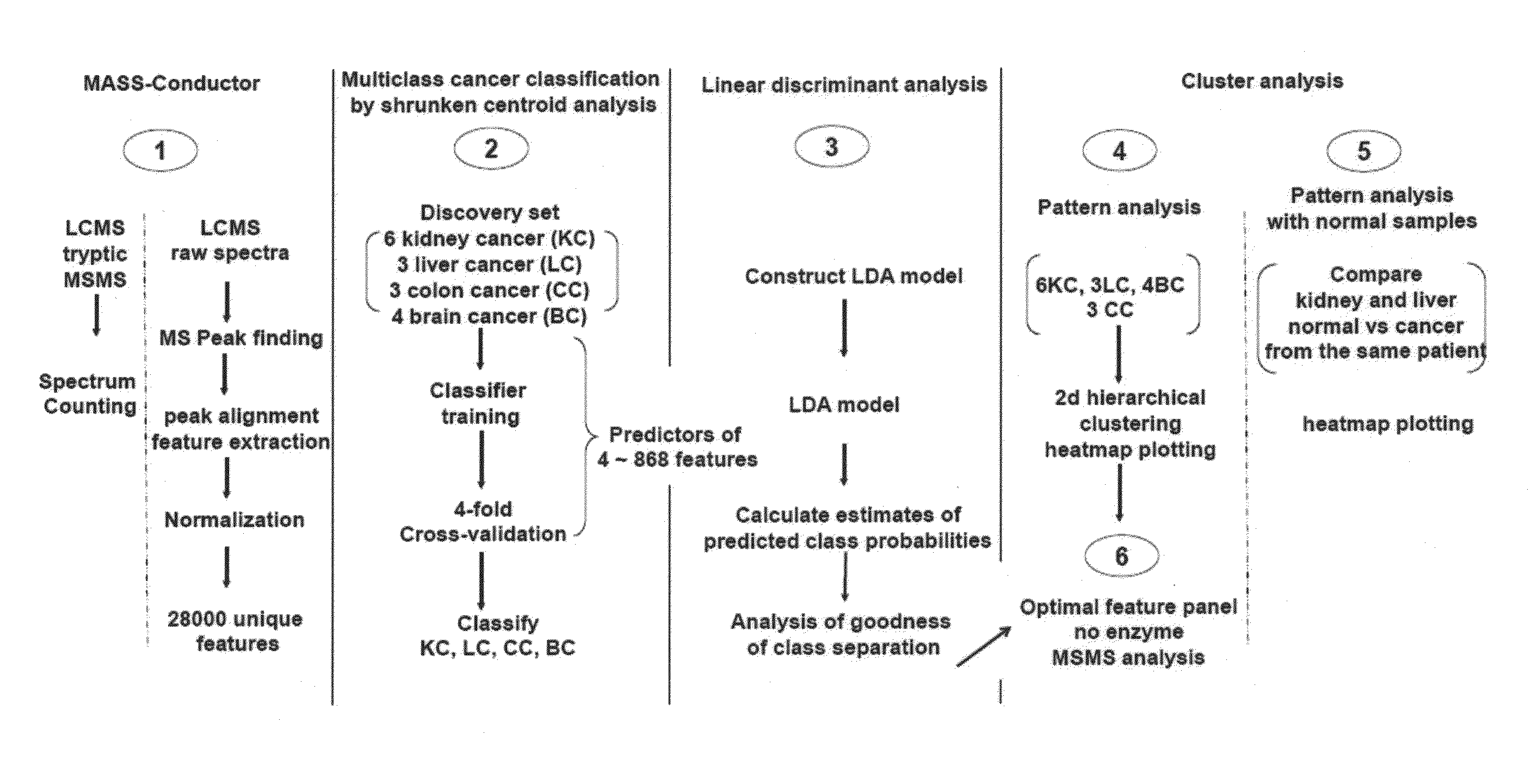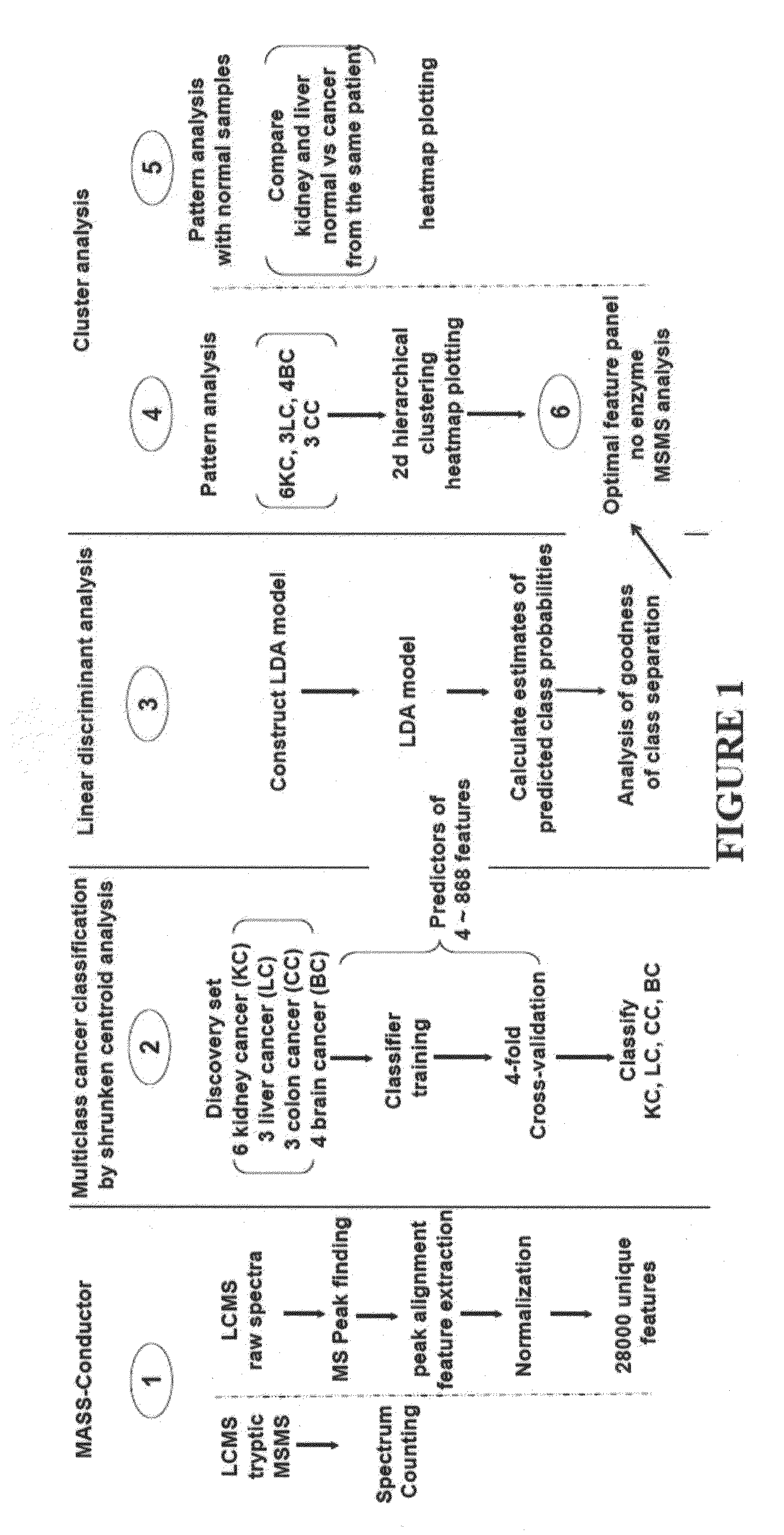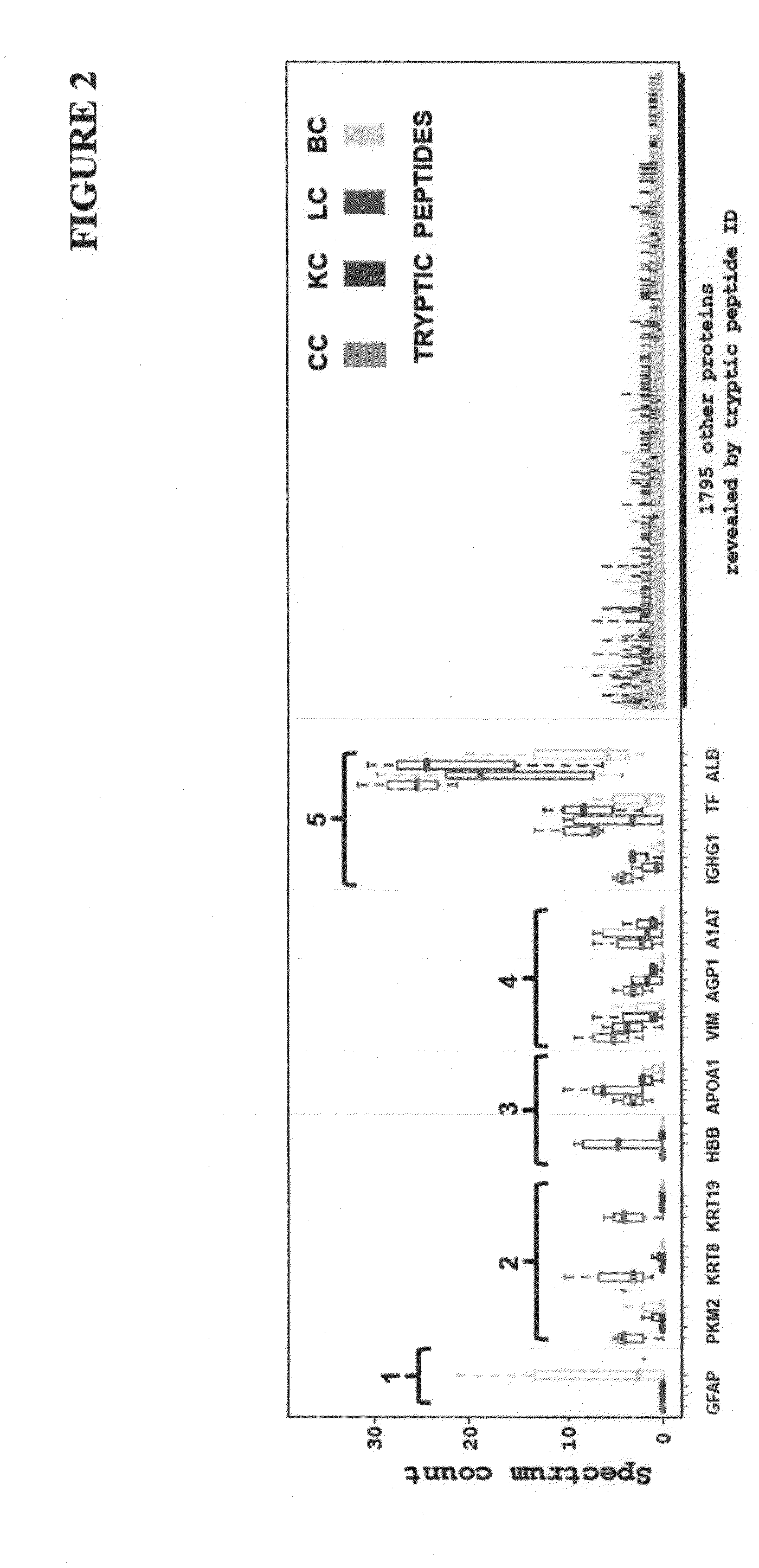Tumor associated proteome and peptidome analyses for multiclass cancer discrimination
a proteome and peptidome technology, applied in the field of tumor-associated proteome and peptidome analyses for multi-class cancer discrimination, can solve the problems of ineffective clinical utility, markers identified heretofore suffer from a number of drawbacks, etc., and achieve the effect of rapid and easy determination
- Summary
- Abstract
- Description
- Claims
- Application Information
AI Technical Summary
Benefits of technology
Problems solved by technology
Method used
Image
Examples
example 1
[0086]Tumor associated proteins and peptides (TAP) are derived from tumor cells through apoptosis / necrosis, cell secretion or tumor-specific degradation of extracellular matrix proteins. In this study, primary tumor samples from colon cancer, kidney cancer, liver cancer, glioblastoma were analyzed by liquid chromatography coupled with mass spectrometry to identify these TAP biomarkers. Spectrum counting and peptidomic analyses found a 12-protein and a 53-peptide biomarker panels, capable of multiclass cancer detection and classification. If further validated prospectively in circulation, these TAP biomarkers have the potential to be developed into practical serological diagnostic and prognostic utilities.
[0087]The rationalebehind the present invention is that TAPs secreted by cancer cells or shed from the cancer microenvironment can enter the circulation, and that these proteins serological abundance can be assessed in combination with a biostatistics model for cancer prediction. An...
PUM
| Property | Measurement | Unit |
|---|---|---|
| concentration | aaaaa | aaaaa |
| temperature | aaaaa | aaaaa |
| total volumes | aaaaa | aaaaa |
Abstract
Description
Claims
Application Information
 Login to View More
Login to View More - R&D
- Intellectual Property
- Life Sciences
- Materials
- Tech Scout
- Unparalleled Data Quality
- Higher Quality Content
- 60% Fewer Hallucinations
Browse by: Latest US Patents, China's latest patents, Technical Efficacy Thesaurus, Application Domain, Technology Topic, Popular Technical Reports.
© 2025 PatSnap. All rights reserved.Legal|Privacy policy|Modern Slavery Act Transparency Statement|Sitemap|About US| Contact US: help@patsnap.com



